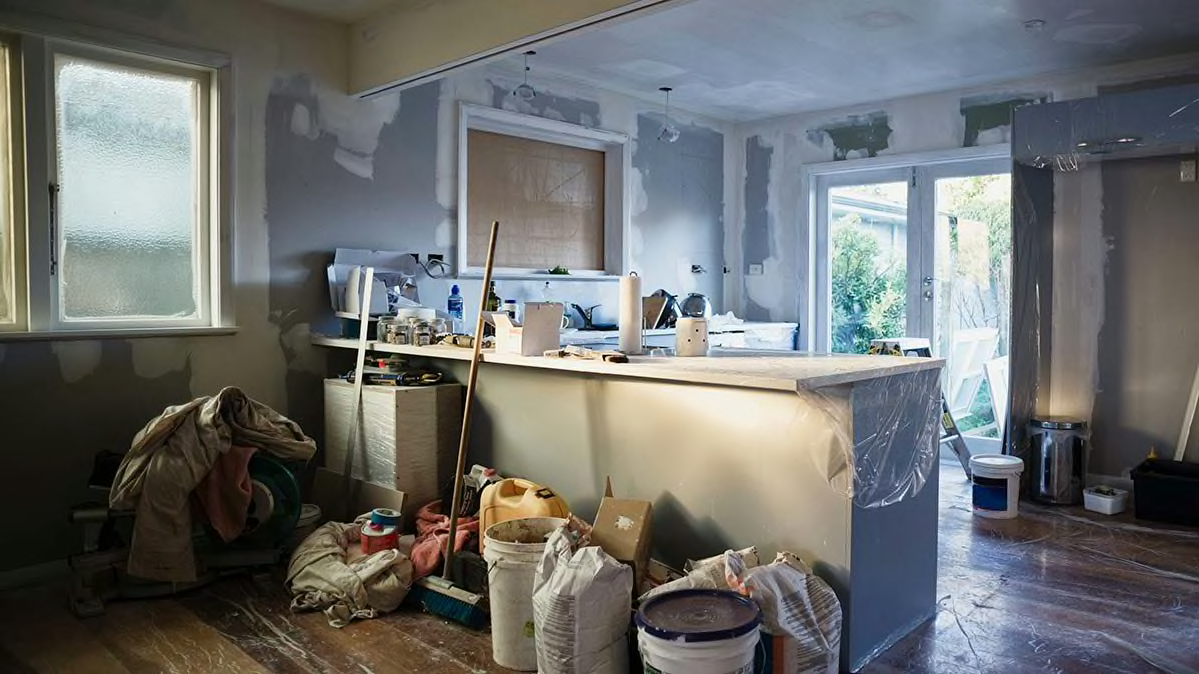How to Finance a Home Improvement Project

Once you’ve determined you’re ready to go forward—and have negotiated a good price with a contractor—check out financing options. If you have 25 percent or more in home equity, consider borrowing off your home. Typically, banks won’t let you borrow off your home unless you have at least 20 percent in home equity. You have a couple of options:
• Home equity line of credit (HELOC). This is a revolving line of credit, like a credit card. In the beginning, you’re only responsible for paying interest monthly; in the later years, you need to begin to pay back principal. A benefit of this type of debt is that you don’t have to take out all the money at once for a project; you can draw gradually, as needed. After that initial “draw period,” the HELOC converts to a fixed loan, and you’ll have to pay back the principal on a set schedule.
HELOC interest rates can go up and down; they’re typically pegged to banks’ prime rate, which is in turn connected to the Federal Reserve’s short-term federal funds rate. With the Fed signaling its intention to raise its rates, expect HELOC interest rates to rise a bit this year. Still, they are historically quite low.
A $30,000 HELOC has an average annual percentage rate of 5.72 percent nationwide, according to Bankrate.com, but you can easily find lenders with significantly lower rates. Third Federal Savings and Loan of Cleveland, for instance, is offering a 3.99 percent APR HELOC for borrowers with excellent credit—that is, FICO scores of 750 and above.
If this loan is your preference, shop around for HELOCs with generous draw periods—say, 12 to 15 years rather than 10 years. Make sure, too, that you get an accounting of all fees, including annual maintenance fees.
• Home equity loan. These fixed loans usually have higher interest rates than HELOCs, but not always. In fact, currently Bankrate is showing home equity loans at a somewhat lower interest rate than HELOCs: 5.60 percent nationally, compared with 5.72 percent for HELOCs.
Greg McBride, chief financial analyst at Bankrate, says that disparity has to do with the fact that home equity loan rates are pegged to longer-term interest rate indices while HELOCs are pegged to short-term rates. “Right now longer-term rates aren’t rising as fast as short-term rates,” he explains.
Still, home equity loan closing costs—typically from 2 to 5 percent of the loan—could still make this type of debt more costly than HELOCs. So be sure you compare loans for all origination and other fees before you decide which type of loan to get, and which lender to use. You can compare costs of three loans at a time using this free calculator.
The tax benefits from borrowing off your home aren’t what they used to be, but for some people they still may be worthwhile.
Under the new tax law passed last year, you can deduct interest on up to $750,000 of total home debt used to buy, build, or improve your home. So if you have a $450,000 mortgage and take out a $200,000 loan for a major home renovation, you’ll still be able to deduct all your mortgage and home loan interest.
But with the standard deduction nearly doubling for 2018, many people will no longer be itemizing their federal taxes, which makes this tax break less valuable for many.
Cundick offers another caveat: People without a lot of home equity should save up a significant emergency fund—at least enough to cover three to six months of living expenses—before opening a home equity loan or HELOC for a home improvement.
“If you don’t have an emergency fund, you can tap home equity you’ve built in the event of an emergency,” he explains. “But if you use that home equity to do a home improvement, you’re shutting the door to that emergency resource.”
Borrowing off your home—and using it as collateral—also could have serious repercussions if its value were to drop precipitously, as it did for many homeowners 10 years ago during the Great Recession. Though stricter lending rules have made that less of an issue, it’s wise not to overborrow, Cundick adds.
